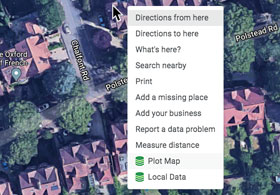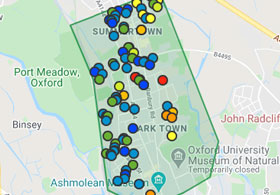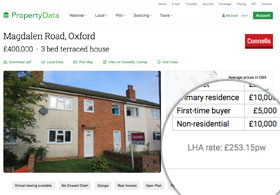What's new June 2020

Jump from Google Maps
Users of our Google Chrome browser extension can now benefit from the ability to jump straight to PropertyData from Google Maps.
Right click on the map or satellite image on Google Maps UK to see two new options for instant PropertyData Plot Map or Local Data searches.

Colour coded pins on Local Data maps
Users of the map view on the Local Data tool will now find the map pins are colour coded to show the property's price or £/sqft, with a dynamic scale.
A great new way to visually analyse price differences by geography in an area.

Local Housing Allowance rates displayed
For properties with 1, 2, 3, or 4 bedrooms, the current official Local Housing Allowance rate for the relevant BRMA (Broad Rental Market Area) is now displayed on the property fact sheet. The same information appears on property valuations too. Crucial data for any landlord considering socially renting a property.
Feature ideas? Questions? Don't hesitate to contact us.
Best wishes,
The PropertyData team



